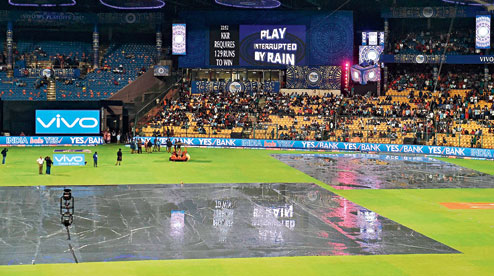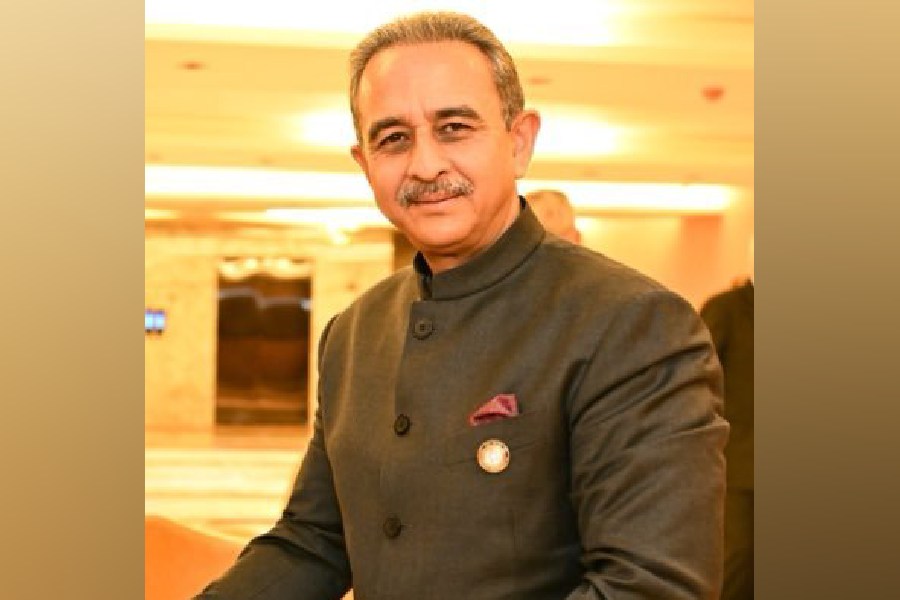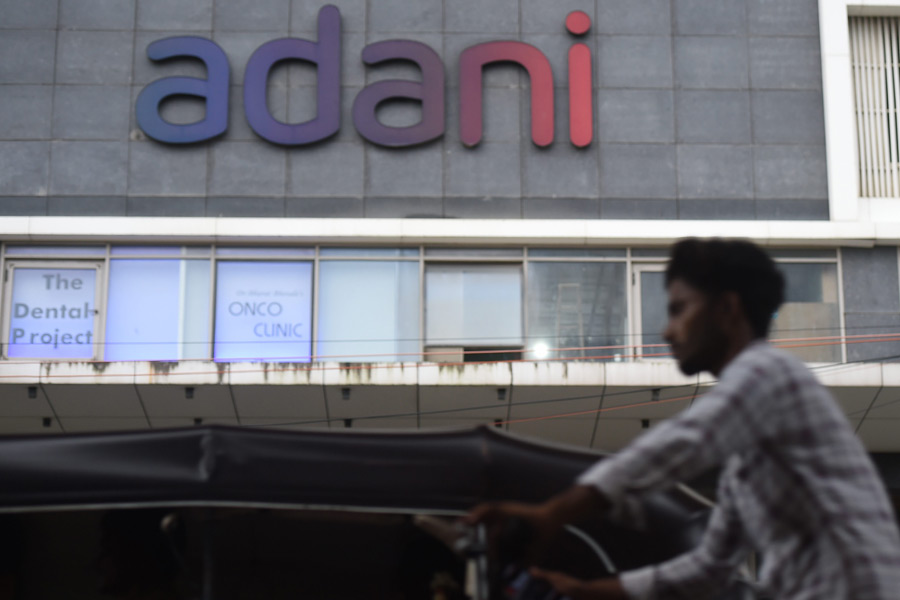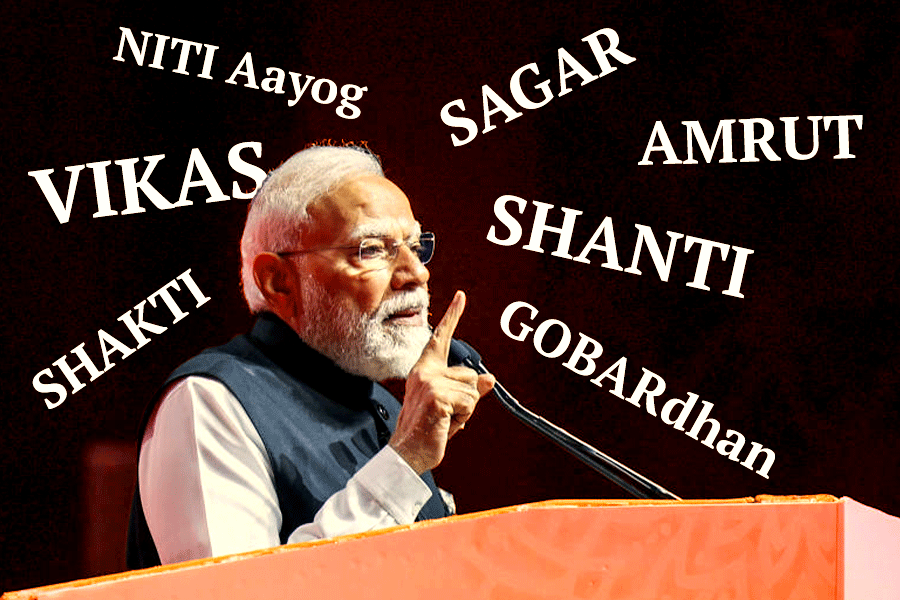RAIN’S STILL A PAIN FOR EDEN

May 18: The Knights are still in the IPL hunt because Bangalore's Chinnaswamy Stadium was fit for play despite almost three hours of intermittent rain in the middle of the match, a minor miracle made possible by technology Eden could aspire to.
"Tribute to drainage. At least a game will decide the winner," tweeted Harsha Bhogle about the curtailed Eliminator between KKR and Sunrisers Hyderabad that started at 8pm on Wednesday and ended at 1.27am today.
Had play not resumed at 12.55am, within 35 minutes of rain finally ceasing at 12.20am, man-of-the-match Nathan Coulter-Nile might have been grumbling about the weather being a spoilsport rather than his bedtime being delayed.
Rarer than "playing cricket at 2am", about which Coulter-Nile has complained, is the feat of an Indian ground being readied for resumption of play after 9.8mm of rain in less than three hours.
Most cricket grounds in the country still have old-world drainage systems that are hard to make up for with better covers and more Super Soppers. The Eden Gardens has taken steps to improve drainage, but is still dependant on the army of groundsmen and natural drainage to get a match going after rain.
Bangalore, in contrast, has virtually removed manual intervention. The technology, supplied by US-based SubAir Systems, is in use in several top international stadiums, including Wembley and Toyota Park, Illinois.
Chinnaswamy Stadium, which unveiled the new system in January, is the first cricket venue in the world to have embraced the technology, according to Anil Kumar, the managing director of Great Sports Infra, which installed the system in the capacity of SubAir's local partner.
The new system makes Chinnaswamy Stadium capable of draining out 10,000 litres of rainwater in a minute. Eden's drainage capacity has not been measured yet but the figure is unlikely to be anywhere close to Chinnaswamy's.
"We are exploring various possibilities to ensure that the Eden Gardens has the best facilities," said Abhishek Dalmiya, joint secretary of the Cricket Association of Bengal.
Talks with Great Sports Infra for a system like Bangalore's in Calcutta have apparently been continuing for three years.

Real-time drainage
Bangalore has introduced drainage on the go powered by a 200-horsepower machine that functions in pressure and suction modes. The vacuum-powered suction mode draws water out of the outfield even as it rains. The pressure mode pumps oxygen to the grass to keep it healthy.
Remote sensors detect the amount of water embedded in the outfield. Once water exceeds the normal level, the sensors send a signal to the machine, which automatically switches to suction mode. "We wanted to make washouts a thing of the past," said M.P. Ganesh, chief executive officer of the Karnataka State Cricket Association, of the now-proven efficacy of the new drainage system.
The plan to revamp the drainage system had been mooted after four days of the India-South Africa Test at the ground in 2015 were rained out. Eden has had its share of washouts, including IPL matches over the years, but is still short of a drainage system that can save a game like was done at Chinnaswamy on Wednesday night.
The Eden way
"The drainage system at the Eden Gardens was redone in 2009, when the perforated pipes installed below the ground in 1983 were changed," said Biswarup Dey, treasurer of the CAB.
Eden has three layers beneath the surface - pipes, gravel and sand. But the top layer is soil, which is relatively impermeable and makes the ground slushy. To beat this, a process called coring or "core aerifying" has been introduced, where sand is injected into the soil to change its nature and make it more permeable.
At Chinnaswamy, the entire outfield was dug up. "Think 1,100 truckloads of soil," said Kumar of Great Sports Infra.
A three-layer drainage system was put in place with perforated drainpipes at the bottom. These pipes form a network spanning 5.5km. Above the pipes lies a layer of gravel. At the top, there is a new sand base that replaced the old red soil, circa 1968. "Sand allows the water to percolate down," Kumar explained.
The sand is mixed with organic manure and nutrients to encourage grass growth above. The gravel acts as a support for the sand and prevents it from entering the perforated drainpipes.
Time and cost
The drainage overhaul at Chinnaswamy took around five months and cost between Rs 6.5 and 7 crore. The average annual maintenance cost is estimated to be Rs 8-10 lakh, Kumar said.
The investment seems worth it. An IPL game being washed out entails a loss of over Rs 3 crore, said a senior official of the CAB.
Kumar said his company was in "an advanced state of discussions" with the CAB on bringing its drainage technology and expertise to Eden.
If the plan works out, Eden might be shut for six to eight months. "We have not been able to find a window of five to six months when there is no international or IPL match," said treasurer Dey.
Till Eden finds the window for a drainage makeover, KKR would be hoping they are not in the same position they were in on Wednesday night when playing on home turf.










